Passenger train services • Main line services / Ticketing
Note: For educational purpose only. This page is meant purely as a documentation tool and has no legal effect. It is not a substitute for the official page of the operating company, manufacturer or official institutions. It cannot be used for staff training, which is the responsibility of approved institutions and companies.
In brief
Since when have there been trains called “Main Lines”? From the very beginnings of the railroad. Just think back to the various pieces of infrastructure that, put together like a jigsaw puzzle, became a network. These were quickly connected at the borders with the neighboring network, and you have Main Lines or Long Distances according to the national jargon.
Expresses soon appeared, as opposed to omnibuses, which stopped everywhere. Initially, these express trains were rather slow, but for their time, they were already a revolution compared with the previous system of rapid transport, provided by stagecoaches that could reach the average speed of a trotting horse (i.e. 10 to 11 km/h). Technical advances in steam traction, followed by passenger carriages, enabled the introduction of long-distance trains that no longer had anything to do with the old stagecoach system. The network gradually spread to all European nations.
Nowadays, mainline traffic has evolved towards a contraction of classic services, due to a demand from governments for these trains to be financially viable, i.e. without subsidies. This had a detrimental effect on Trans Europ Express traffic, which disappeared in 1987, as well as on a large number of night trains and international services. In addition, since the 90s, high-speed trains have been gaining in power and, in some parts of Europe, have relegated conventional mainline trains to a more limited role. Finally, since 2010, the mainline sector has also been operated by a small number of alternative operators, with intensities varying from country to country.
Overall, the mainline rail sector is operated through four main segments:
All long-distance trains at a glance
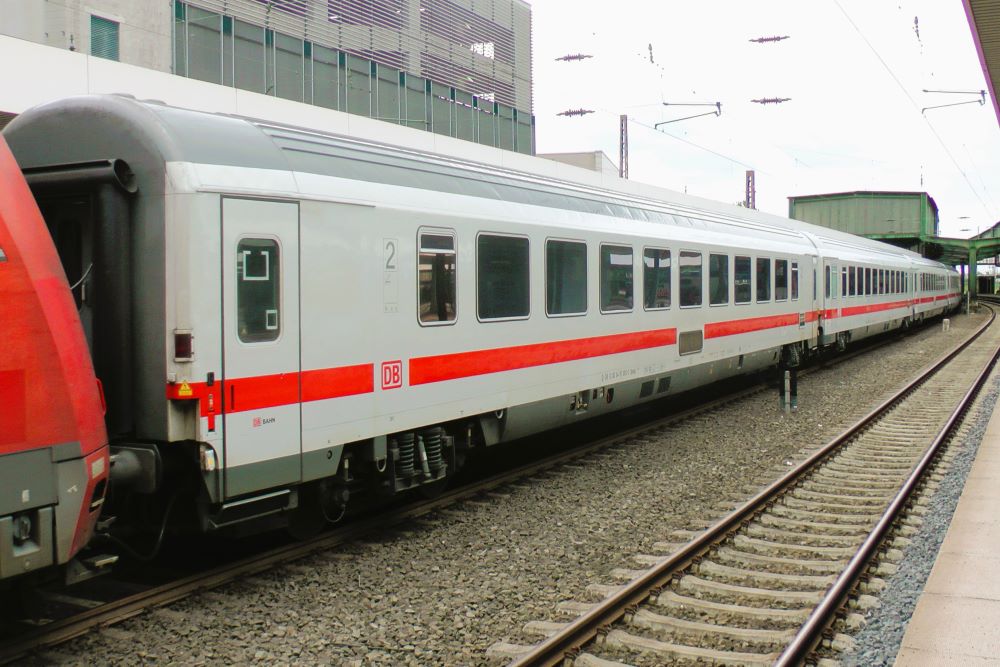
Intercity, Eurocity, Trans Europ Express
• Until to 30’s year
• Pullmann
• From Post-war boom to 21th century
• Trans-Europ-Express
• Benelux services
• Intercity / Eurocity
• Railjet in Austria
• Which business model?
• Rolling stock
• On-board service
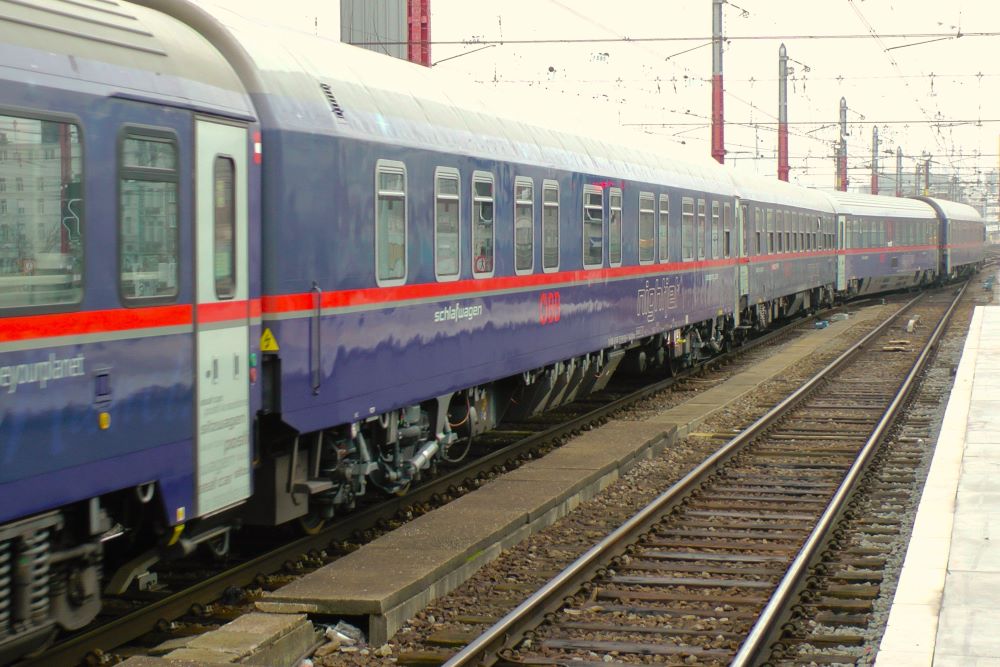
Night train
• A brief history
• From Post-war boom to 21th century
• Orient-Express
• Couchette-car
• Motorrail
• Holyday trains
• Russia-Europe
• Nightjet ÖBB
• Which business model?
• Rolling stock
• On-board service
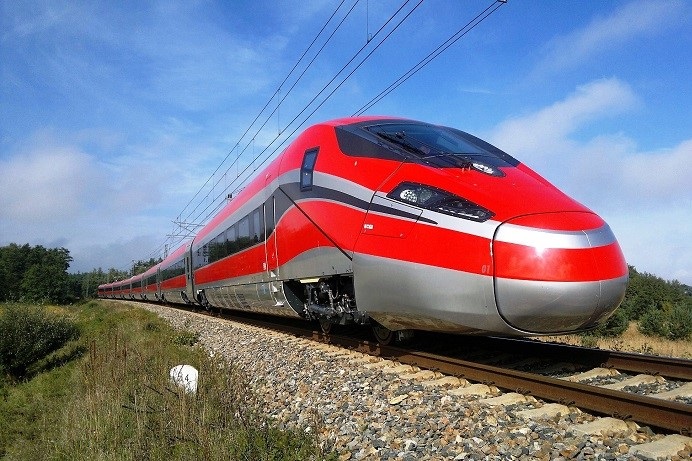
High speed train
• A brief history
• Infrastructure, alignment,…
• Benelux
• France
• Germany
• Italy
• Japan
• NTV-Italo
• Spain
• Eurostar, Thalys, ICE,…
• Rolling stock
• On-board service
• Economics
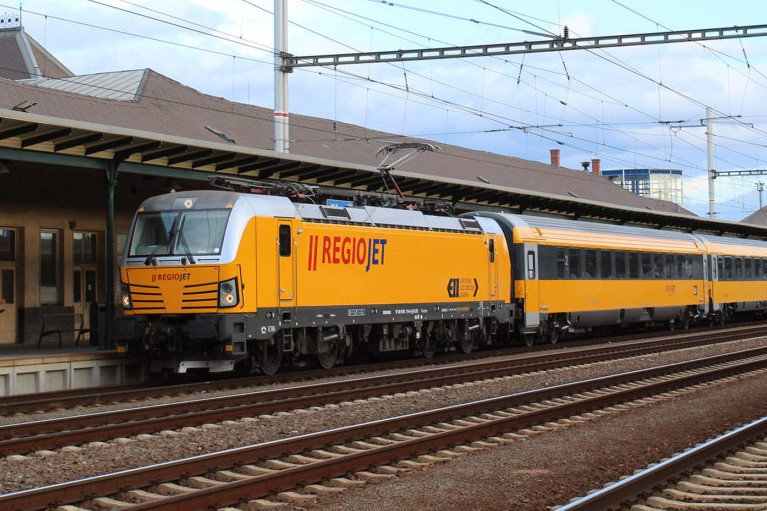
New mainline operators in Europe
• What Europe want
• Social evolution
• English franchising
• Open access
• New mainline operators in Europe – The list
• NTV-Italo
The born of long distance trains
As networks were built up, trains moved from local to longer distances. The first international train ran between Strasbourg and Basel in 1841. Long-distance trains began to appear in different parts of Europe as infrastructure progressed:
• 1830: first Liverpool-Manchester “main line”;
• 1837: inauguration of the Leipzig-Dresden line;
• 1837: extension allowing Liverpool-Manchester-Crewe-Birmingham trains.
• 1840: opening of York-Leeds line;
• 1843: opening of Brussels-Liège-Aachen-Cologne route;
• 1847-1855: (Paris) – Creil – St Quentin – Jeumont – (Belgium) allows full Paris-Brussels-Cologne;
• 1850-1860: through a turbulent railway history, first full service from London to Glasgow;
• 1851: opening of the Moscow-Saint Petersburg line;
• 1853: Orléans – Bordeaux extension, enabling a full Paris – Bordeaux service;
• 1854: opening of the Innsbrück – Bolzano (Italy) link, opening up a full connection between Munich and Italy;
• 1872: inauguration of Nice – Monaco – Ventimiglia, enabling a full Paris – Côte d’Azur service;
• 1882: inauguration of the first Gotthard tunnel, providing a full link between Basel and Italy;
• 1906: inauguration of the Simplon tunnel between Brig and Domodossola, providing a second Basel-Italy link;
• …..
• 1994: opening of the Channel Tunnel, linking London to continental Europe.
In Germany, the first long-distance line dates back to 1839, with the opening of a 120 km line between Leipzig and Dresden, where the first express trains appeared. In 1846, express trains also ran on the 286-km stretch between Berlin and Hamburg. That same year, on June 14, 1846, an international train could already link Brussels to Paris via Valenciennes: the journey took 14 hours, and there was already a night train (Paris 7:00 pm, Brussels 9:00 am). At the same time, a Paris-Cologne service was available, taking almost 24 hours. It wasn’t until May 1851 that a full connection between Berlin and Cologne was finally possible, at the cost of a 16-hour journey. In 1858, a line was painstakingly made available in Spain between Madrid and Alicante, followed in 1860 by a complete connection from Madrid to Barcelona. In Great Britain, multiple networks were already making long journeys possible. The first express train between London and Edinburgh ran as early as 1862, completing the journey in ten and a half hours. By 1866, it had become possible to cross the entire Italian peninsula from Turin to Lecce, and from Milan-Central to Rome via the Perugia-Terni section. In 1867, Italy was connected to the Tyrol by the Verona – Innsbrück line, via the Brenner. This succession of line openings soon made it possible to offer a wide range of comfort on long-distance trains in all countries.

The length of the routes militated in favor of a significant increase in passenger car comfort. All the more so as a large number of express trains ran at night, with a wide variety of comforts that were the stuff of literary delights. It was during a trip to the United States in 1867 that Belgian Georges Nagelmackers discovered a completely different way of traveling. There, The Pioneer was a train in which night travelers had a toilet with hot and cold running water, a linen cupboard and refined decoration. Other trains feature luxurious passenger carriages designed by George Pullman, with real velvet armchairs rather than benches, and tables with white tablecloths and real porcelain crockery. In other words, a perfect imitation of the great luxury hotels of the time.
Nagelmackers brought this idea back to Europe, and in 1870 published a document that included the hitherto unknown word “sleeping car” (“wagon-lits” in french): the true night train was born. Later, daytime-only express trains, whose speeds increased significantly as traction improved, were equipped with luxurious carriages similar to those of the American George Pullmann.


In the years 1910-1920, we have the complete railway ecosystem:
• local trains, called omnibuses, catering to the local public;
• daytime express trains that covered more kilometers in less time;
• night express that cover ever longer distances in refined comfort;
• freight trains that still closely resemble those of the 1840s and 1860s…
The most famous of these night trains is, of course, the Orient Express, to which we’ll return in greater detail later. But it shouldn’t overshadow all the other, less talked-about night trains linking every city in Europe. We’re in the midst of the ‘Roaring Twenties’, and travel has become a fashion that has given rise to the great tourist destinations of Cannes, Nice, Biarritz and Venice, as well as spas and gaming resorts like Baden-Baden and Karlsbad. It was also the age of skiing, with the great social resorts of Saint Moritz in Switzerland and Kitzbühel in Austria.

A characteristic feature of long-distance trains is the presence of the dining car. The concept dates back to the mid-19th century, and was amply justified by the length of journeys and the need to fill empty stomachs. Dining cars were incorporated into both night and day trains. They even became a marketing argument, such as “from Paris to Lille for lunch”.
But for this to happen, the rail/vehicle combination had to make progress. This was the case with the gradual adoption of long welded rails to reduce the famous ‘tac-tac’. The track itself was reinforced to accept higher speeds, while smoothing out the ride. The vehicles are better insulated and feature bogies to improve ride smoothness. Last but not least, traction, still steam-powered, made great strides forward, with some 1930s machines reaching speeds of 140km/h.
From 1902 (Switzerland) to 1947 (Great Britain), all European railroads were nationalized. International long-distance trains became standard-bearers of national pride in this troubled period of contemporary history…
Years 1950-1960
The ’30s were the height of refinement, before the paranthesis of the Second World War laid waste to the concept. The post-war Orient-Express was never the same again, and heralded decay. In the immediate aftermath of the Second World War, the urgency was obviously to rebuild nations, to get the economy back on track. While the Americans imported new ways of life with D-Day, the railroads were hastily rebuilt using the same technical and administrative model as in the 1930s, with many pain.

In the meantime, the steady growth of air transport, an invention imported by the Americans with the famous Marshall Plan, was already motivating the railroads to demonstrate their creativity. For its part, the definitive entry into the second industrial revolution, that of oil, led to a shift towards a world designed around roads and freeways. The risk of marginalizing the railways was real, and well understood by their leaders. In 1954, three years before the Treaty of Rome, at the instigation of the head of the Dutch railroads, the ‘Trans-Europ-Express‘ group was created. The aim was to provide top-quality train services linking Europe’s major industrial and financial centers. Rail travel in the 1950s-1960s was still a mixture of steam-powered dezrniers and modern electrification.
With the great migrations of the 1950s and 1960s, the clientele changed. Immigrants from Portugal, Spain, Italy and even Greece and Turkey began to migrate in large numbers. Comfort was no longer a priority for these populations. As long as there were direct cars to the rich north, that’s all that mattered. This had a major influence on the composition of the great international trains, notably the Orient-Express, which became an ordinary train that had lost its lustre. Mr Pullmann’s elegance is a distant memory, but the train saved thousands of Greeks and Portuguese from misery and dictatorship…


During the 1960s, the express landscape was a vast mishmash of somewhat catch-all services:
• daytime expresses with a variety of compositions and missions;
• luxury expresses under the Trans-Europ-Express label, setting themselves apart from the other services;
• night trains, with a novelty: the sleeper car, to cram men and women into six-seater compartments.
The electrification of lines was extended, but with one current per country, almost systematically requiring locomotive changes at borders: 3kV in Belgium and Italy, 15kV in Germany, Switzerland and Austria, 1500V in the south of France and 25kV in the northern third of France. Each railway company became the standard-bearer for the national industry, and issued its own solutions.
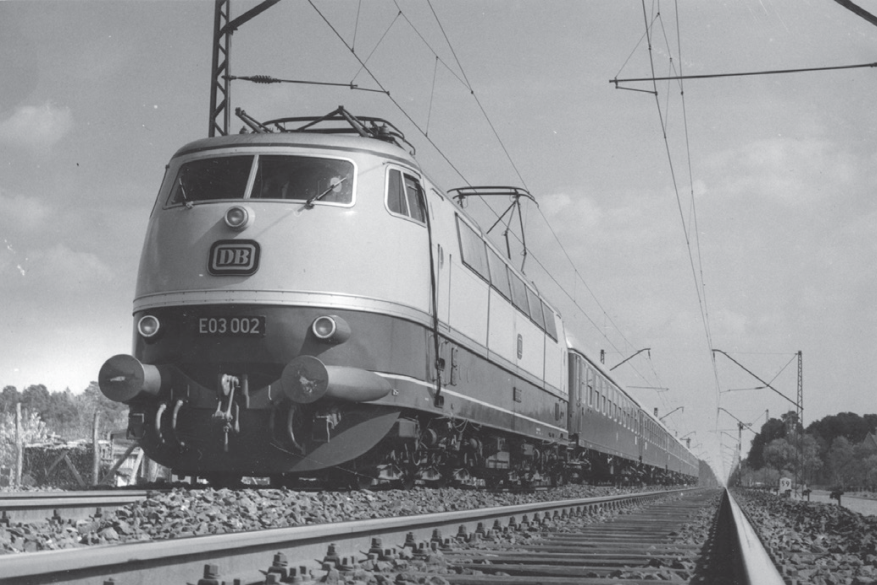

Years 1970-1980

As expectations grew, so did the comfort of long-distance trains. A start had been made on standardization since the 1960s. The UIC had succeeded in having its famous 26.40m UIC-X cars developed and accepted throughout Europe, enabling international traffic to develop and a fleet of similar designs to be built. Back in the 1960s and 1970s, the compartment car still dominated in terms of comfort, both in first and second class. In Italy, for example, families often travelled as a whole, and the compartment became a little home for a dozen hours or so (photo). In the 1970s, an attempt was made to create the European Standard Vehicle (ESV) with the “Eurofima” vehicle, designed entirely on the basis of UIC criteria. Unfortunately, this attempt came at a time when railway administrations wanted more capacity, and so abandoned the compartment layout in favor of a “coach” layout, i.e. rows of seats like in a coach.



The Intercity concept was invented in England in the mid-70s. The aim was to systematically link major English cities with one or two trains per hour, departing at the same minute each time (7.05, 8.05, 9.05…) and making the same stops throughout the day. Germany will do the same with its ‘FD‘ trains, running every two hours on the North-South lines of what was then the Federal Republic of Germany. This was an opportunity to introduce new, comfortable rolling stock: the British had done so with their famous InterCity 125 diesel trains with rows of seats (photo opposite).
The late 1970s saw a marked change in the customer base. Trans Europe Express’s premium first-class service no longer seemed to be in vogue, while a less affluent clientele demanded air-conditioning, greater comfort and frequency. So, in 1979, Deutsche Bahn introduced hourly Intercity services: this time, the focus was no longer on luxury and privileged customers. The trains are two-class, have a dining car and all have air-conditioning. This unrivalled level of comfort overshadowed the Trans-Europ-Express network, which still survived in the early 1980s. France never embraced the concept of interval service, preferring long, heavy express services linking Paris to all the prefectures of France at least once a day. Spain, Italy and Sweden also operated a wide variety of express services throughout the day, some with few stops, others with many more. Europe was then criss-crossed by express trains of varying fortunes, as well as a large number of night trains to Lisbon, Palermo, Athens, Vienna and even… Moscow.
The problem was that the operation of these trains sometimes led to confusion with regional traffic. In Belgium, Austria, Denmark and Switzerland, for example, some express or international trains were integrated as “domestic trains”. At peak times, commuters were sometimes left without seats, as express trains were not designed for “local” service (e.g. Cologne-Brussels-Ostend, very full between Liège and Brussels in the morning). What’s more, the cost of long-distance trains was drowned in the incumbent operator’s general deficit, with a kind of tacit equalization whereby the best trains financially sustained the worst. The mix of customers was also a problem, between international and national mainline tickets and certain social subscriptions. In its paper indicators at the time, Belgium’s SNCB forbade certain express services to season ticket holders, especially on the Brussels-Mons line and its 12 trains to Paris.
Profitability, competition, high speed and a changing world

1981 saw the launch of the TGV between Paris and Lyon, heralding a new era in rail travel. Trans-Europ-Express disappeared in 1987, to be replaced by Eurocity, a concept that would expand only in the German-Alpine countries, with the rest of Europe adopting it only modestly, and France preferring the TGV. The TGV began to compete with night trains. High-speed rail gained unprecedented momentum in Germany in 1989, then in Italy in 1992, and more modestly in Spain on the Madrid-Seville line. The pinnacle was reached with the first TGV link between the Continent and London, in November 1994. High-speed rail then took off across the Continent, but also took its toll with the gradual elimination of night trains and some Intercity services. Central Europe and Scandinavia, however, remained untouched by the high-speed phenomenon.
A major difference then arises in operating cultures. While Germany integrated its ICE (Inter City Express) into its hourly IC network, France, Spain and Italy preferred to operate high-speed trains as a separate concept, as a novelty. The result was a gradual abandonment of the classic long-distance train, except on routes without high speed (Paris-Cherbourg, Paris-Clermont-Ferrand, Madrid-Vigo, Madrid-Bilbao, etc.). The years 1980-1990 were those when people really believed in a “lean” railroad, with only a few major high-speed routes. Fortunately, some voices were raised against this idea, but it has to be said that high-speed rail has dealt a bad blow to the classic train, except perhaps in Spain, where RENFE continued to improve its “slow” trains with comfortable Talgo trainsets. Countries without high-speed trains – Austria, Central Europe, the UK and Scandinavia – didn’t have to deal with this duality, and continued to operate classic mainline trains at their convenience, as shown in these shots from Sweden (left) and Poland (right).


The 2000s saw the reappearance of fierce competition from air travel, but in an unexpected low-cost version that also heralded new forms of mobility, such as car-sharing and liberalized buses. The long-distance train is once again in danger, including the TGV. The European Commission is attempting to standardize the construction of long-distance trains and improve the economic balance through various directives. The results were mixed, with intercity and long-distance trains being refocused on national territory. At the same time, a host of new players have appeared on the tracks, with varying degrees of success (NTV-Italo, WestBahn, RegioJet).


In the 2020s, Europe found itself at the head of a mix of high-speed trains that needed to regain their virginity and find a new business model. Classic intercity trains had not disappeared, but were the subject of different policies depending on the country and the mission. The Austrians, against all odds, decided to expand the Nightjet night train network they had introduced at the end of 2016. 🟧
[TOP]
Passenger train services • Lexical
